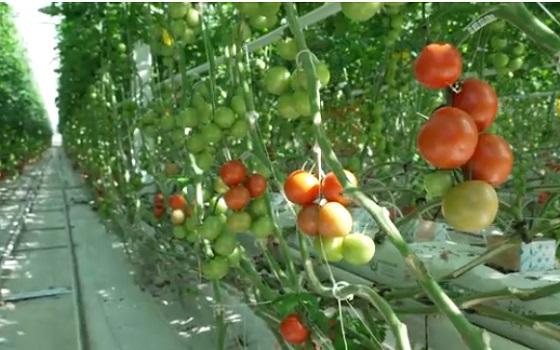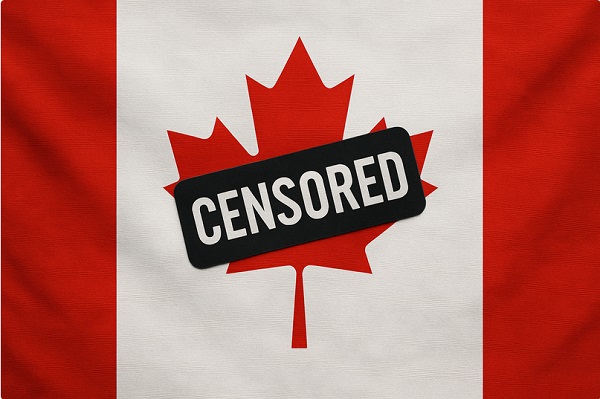Business
The debt silver bullet? Ending corporate welfare

From the Canadian Taxpayers Federation
By Jay Goldberg
Canadians are worried about government debt and axing corporate welfare is the closest thing to a silver bullet politicians have to solve the problem.
Canada’s politicians spent $89 billion handing out taxpayer cash to corporations in 2021, the last year for which figures are available, according to the Fraser Institute.
To get a handle on swelling government debt at both the federal and provincial levels, it’s time to put corporate welfare on the chopping block.
And those who think taxpayers don’t care about government debt are sorely mistaken.
A recent Leger poll shows 81 per cent of Ontarians are concerned about the debt dive the province has taken over the past decade.
No doubt Canadian taxpayers are just as alarmed about the doubling of Canada’s federal debt during Prime Minister Justin Trudeau’s nine years running Parliament Hill.
When an individual has a debt problem, the first step is to stop digging. The same is true of governments.
This year, just two of Canada’s 10 provinces are running balanced budgets. And Ottawa is nowhere close.
But look at the corporate welfare numbers and a path to solving Canada’s run-away government debt problem begins to emerge.
Take Ontario.
Ontario’s politicians have racked up $145 billion in new debt over the past decade, including more than $80 billion over the past six years under Premier Doug Ford.
Thanks to years of mismanagement, Ontario taxpayers will spend $13.9 billion on debt interest payments this year. That’s more than the province spends on post-secondary education.
And this year’s deficit is a whopping $9.8 billion.
Ontarians are concerned. And rightly so.
But take a quick gander at the Fraser Institute’s report and a path toward balance becomes clear.
The Ford government spent $22.1 billion in taxpayer handouts to corporations in 2021.
If this year’s handouts are even half of what they were in 2021, the Ford government could wipe out its deficit and produce a surplus by eliminating corporate welfare alone.
It’s unfair to place more and more debt at the feet of our children and grandchildren to give wealthy companies handouts.
It’s also unfair to pick winners and losers. The Ford government is taxing hardworking Ontarians, as well as small businesses, and handing billions over to wealthy corporations that don’t need taxpayer help.
Over the past few years, the Ford government has teamed up with the Trudeau Liberals to give billions to wealthy companies like Honda, Volkswagen, the Ford Motor Company, Stellantis, and many others.
Each year, Ottawa and Queen’s Park ran big deficits while handing out taxpayer cash to wealthy companies like candy. In many cases, taxpayers are paying millions of dollars for every job created.
Corporate welfare is fueling government debt. And it’s time for it to stop.
Not only is corporate welfare insanely costly, but it simply doesn’t work.
Between 2011 and 2021, the Ontario government spent $100 billion on corporate welfare. Yet inflation-adjusted economic growth in Ontario was below one per cent, on average, during that decade.
If handing out billions to create jobs and grow the economy worked, surely, we’d have the evidence by now.
Queen’s Park isn’t the only place where the budget could be turned around if corporate welfare were a thing of the past.
The Trudeau government also spent $47 billion on corporate welfare in 2021, which roughly equates to its budget deficit this year.
If 2024 corporate welfare numbers are in line with 2021, the Trudeau government could balance its budget in one fell swoop.
Taxpayers are rightly concerned about growing government debt across the country. Ending handouts to wealthy companies is an obvious solution to the debt binge.
After all, you cannot borrow and subsidize your way to prosperity.
Business
Major tax changes in 2026: Report

The Canadian Taxpayers Federation released its annual New Year’s Tax Changes report today to highlight the major tax changes in 2026.
“There’s some good news and bad news for taxpayers in 2026,” said Franco Terrazzano, CTF Federal Director. “The federal government cut income taxes, but it’s hiking payroll taxes. The government cancelled the consumer carbon tax, but it’s hammering Canadian businesses with a higher industrial carbon tax.”
Payroll taxes: The federal government is raising the maximum mandatory Canada Pension Plan and Employment Insurance contributions in 2026. These payroll tax increases will cost a worker up to an additional $262 next year.
For workers making $85,000 or more, federal payroll taxes (CPP and EI tax) will cost $5,770 in 2026. Their employers will also be forced to pay $6,219.
Income tax: The federal government cut the lowest income tax rate from 15 to 14 per cent. This will save the average taxpayer $190 in 2026, according to the Parliamentary Budget Officer.
Carbon taxes: The government cancelled its consumer carbon tax effective April 1, 2025. However, the government still charges carbon taxes through its industrial carbon tax and a hidden carbon tax embedded in fuel regulations.
The industrial carbon tax will increase to $110 per tonne in 2026. While the government hasn’t provided further details on how much the industrial carbon tax will cost Canadians, 70 per cent of Canadians believe businesses pass on most or some of the cost of the tax to consumers, according to a Leger poll.
Alcohol taxes: Federal alcohol taxes are expected to increase by two per cent on April 1, 2026. This alcohol tax hike will cost taxpayers about $41 million in 2026-27, according to industry estimates.
First passed in the 2017 federal budget, the alcohol escalator tax automatically increases excise taxes on beer, wine and spirits every year without a vote in Parliament. Since being imposed, the alcohol escalator tax has cost taxpayers about $1.6 billion, according to industry estimates.
“Canadians pay too much tax because the government wastes too much money,” Terrazzano said. “Canadians are overtaxed and need serious tax cuts to help make life more affordable and our economy more competitive.
“Prime Minister Mark Carney needs to significantly cut spending, provide major tax relief and scrap all carbon taxes.”
You can read the CTF’s New Year’s Tax Changes report here.
Automotive
Politicians should be honest about environmental pros and cons of electric vehicles

From the Fraser Institute
By Annika Segelhorst and Elmira Aliakbari
According to Steven Guilbeault, former environment minister under Justin Trudeau and former member of Prime Minister Carney’s cabinet, “Switching to an electric vehicle is one of the most impactful things Canadians can do to help fight climate change.”
And the Carney government has only paused Trudeau’s electric vehicle (EV) sales mandate to conduct a “review” of the policy, despite industry pressure to scrap the policy altogether.
So clearly, according to policymakers in Ottawa, EVs are essentially “zero emission” and thus good for environment.
But is that true?
Clearly, EVs have some environmental advantages over traditional gasoline-powered vehicles. Unlike cars with engines that directly burn fossil fuels, EVs do not produce tailpipe emissions of pollutants such as nitrogen dioxide and carbon monoxide, and do not release greenhouse gases (GHGs) such as carbon dioxide. These benefits are real. But when you consider the entire lifecycle of an EV, the picture becomes much more complicated.
Unlike traditional gasoline-powered vehicles, battery-powered EVs and plug-in hybrids generate most of their GHG emissions before the vehicles roll off the assembly line. Compared with conventional gas-powered cars, EVs typically require more fossil fuel energy to manufacture, largely because to produce EVs batteries, producers require a variety of mined materials including cobalt, graphite, lithium, manganese and nickel, which all take lots of energy to extract and process. Once these raw materials are mined, processed and transported across often vast distances to manufacturing sites, they must be assembled into battery packs. Consequently, the manufacturing process of an EV—from the initial mining of materials to final assembly—produces twice the quantity of GHGs (on average) as the manufacturing process for a comparable gas-powered car.
Once an EV is on the road, its carbon footprint depends on how the electricity used to charge its battery is generated. According to a report from the Canada Energy Regulator (the federal agency responsible for overseeing oil, gas and electric utilities), in British Columbia, Manitoba, Quebec and Ontario, electricity is largely produced from low- or even zero-carbon sources such as hydro, so EVs in these provinces have a low level of “indirect” emissions.
However, in other provinces—particularly Alberta, Saskatchewan and Nova Scotia—electricity generation is more heavily reliant on fossil fuels such as coal and natural gas, so EVs produce much higher indirect emissions. And according to research from the University of Toronto, in coal-dependent U.S. states such as West Virginia, an EV can emit about 6 per cent more GHG emissions over its entire lifetime—from initial mining, manufacturing and charging to eventual disposal—than a gas-powered vehicle of the same size. This means that in regions with especially coal-dependent energy grids, EVs could impose more climate costs than benefits. Put simply, for an EV to help meaningfully reduce emissions while on the road, its electricity must come from low-carbon electricity sources—something that does not happen in certain areas of Canada and the United States.
Finally, even after an EV is off the road, it continues to produce emissions, mainly because of the battery. EV batteries contain components that are energy-intensive to extract but also notoriously challenging to recycle. While EV battery recycling technologies are still emerging, approximately 5 per cent of lithium-ion batteries, which are commonly used in EVs, are actually recycled worldwide. This means that most new EVs feature batteries with no recycled components—further weakening the environmental benefit of EVs.
So what’s the final analysis? The technology continues to evolve and therefore the calculations will continue to change. But right now, while electric vehicles clearly help reduce tailpipe emissions, they’re not necessarily “zero emission” vehicles. And after you consider the full lifecycle—manufacturing, charging, scrapping—a more accurate picture of their environmental impact comes into view.
-

 COVID-192 days ago
COVID-192 days agoTrump DOJ seeks to quash Pfizer whistleblower’s lawsuit over COVID shots
-

 Alberta2 days ago
Alberta2 days agoAlberta introducing three “all-season resort areas” to provide more summer activities in Alberta’s mountain parks
-

 Agriculture2 days ago
Agriculture2 days agoGrowing Alberta’s fresh food future
-

 International2 days ago
International2 days agoTrump admin wants to help Canadian woman rethink euthanasia, Glenn Beck says
-

 Alberta2 days ago
Alberta2 days agoThe case for expanding Canada’s energy exports
-

 Censorship Industrial Complex1 day ago
Censorship Industrial Complex1 day agoOttawa’s New Hate Law Goes Too Far
-

 Business1 day ago
Business1 day agoFuelled by federalism—America’s economically freest states come out on top
-

 Automotive1 day ago
Automotive1 day agoPoliticians should be honest about environmental pros and cons of electric vehicles









